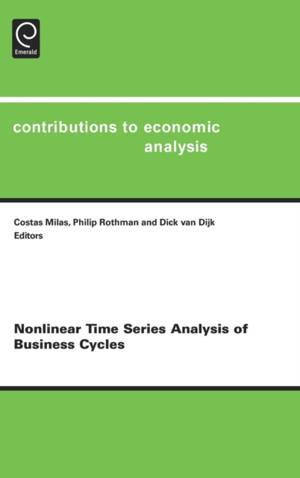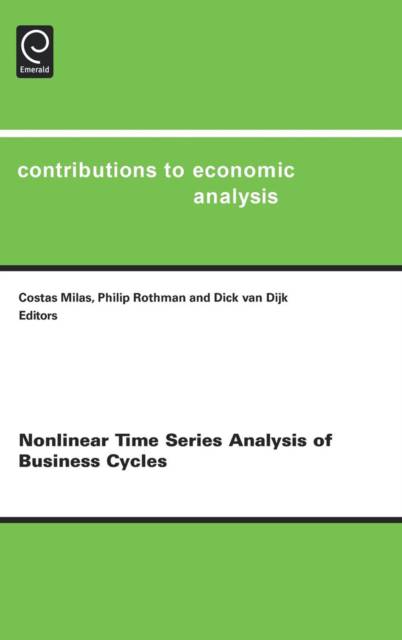
Je cadeautjes zeker op tijd in huis hebben voor de feestdagen? Kom langs in onze winkels en vind het perfecte geschenk!
- Afhalen na 1 uur in een winkel met voorraad
- Gratis thuislevering in België vanaf € 30
- Ruim aanbod met 7 miljoen producten
Je cadeautjes zeker op tijd in huis hebben voor de feestdagen? Kom langs in onze winkels en vind het perfecte geschenk!
- Afhalen na 1 uur in een winkel met voorraad
- Gratis thuislevering in België vanaf € 30
- Ruim aanbod met 7 miljoen producten
Zoeken
Nonlinear Time Series Analysis of Business Cycles
€ 302,95
+ 605 punten
Omschrijving
The business cycle has long been the focus of empirical economic research. Until recently statistical analysis of macroeconomic fluctuations was dominated by linear time series methods. Over the past 15 years, however, economists have increasingly applied tractable parametric nonlinear time series models to business cycle data; most prominent in this set of models are the classes of Threshold AutoRegressive (TAR) models, Markov-Switching AutoRegressive (MSAR) models, and Smooth Transition AutoRegressive (STAR) models. In doing so, several important questions have been addressed in the literature, including: Do out-of-sample (point, interval, density, and turning point) forecasts obtained with nonlinear time series models dominate those generated with linear models? How should business cycles be dated and measured? What is the response of output and employment to oil-price and monetary shocks? How does monetary policy respond to asymmetries over the business cycle? Are business cycles due more to permanent or to transitory negative shocks? And, is the business cycle asymmetric, and does it matter? "Contributions to Economic Analysis" was established in 1952. The series purpose is to stimulate the international exchange of scientific information. The series includes books from all areas of macroeconomics and microeconomics.
Specificaties
Betrokkenen
- Uitgeverij:
Inhoud
- Aantal bladzijden:
- 460
- Taal:
- Engels
- Reeks:
- Reeksnummer:
- nr. 276
Eigenschappen
- Productcode (EAN):
- 9780444518385
- Verschijningsdatum:
- 8/02/2006
- Uitvoering:
- Hardcover
- Formaat:
- Genaaid
- Afmetingen:
- 157 mm x 227 mm
- Gewicht:
- 820 g

Alleen bij Standaard Boekhandel
+ 605 punten op je klantenkaart van Standaard Boekhandel
Beoordelingen
We publiceren alleen reviews die voldoen aan de voorwaarden voor reviews. Bekijk onze voorwaarden voor reviews.








